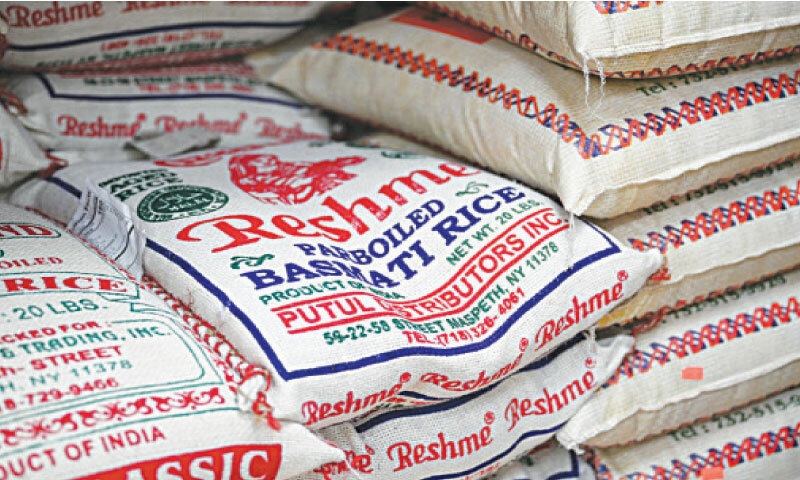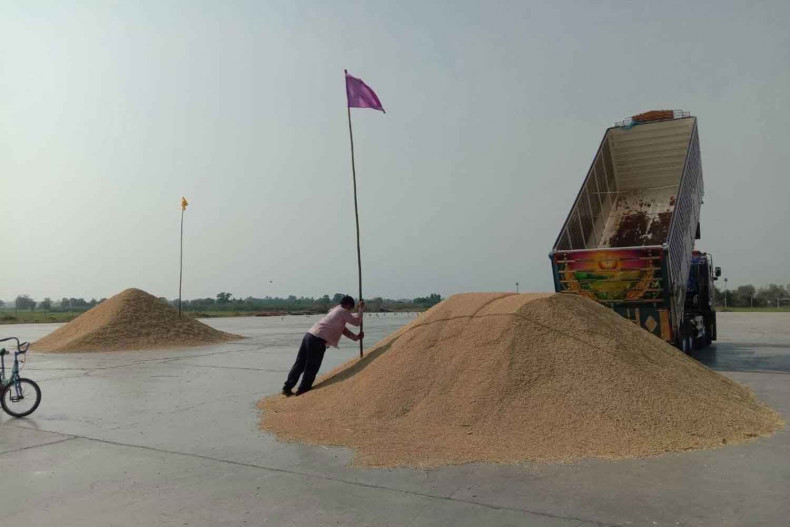Tags
Why has Japan been hit with rice shortages, soaring prices despite normal crops?

TOKYO — Shortages of rice have recently been seen across Japan, and the price of the staple food is soaring. But close to 100% of Japan’s rice is domestically produced and the yield of crops appears normal, so why is this happening?
The Mainichi Shimbun spoke with Kazuhito Yamashita, a former bureaucrat at Japan’s Ministry of Agriculture, Forestry and Fisheries and a research director at the Canon Institute for Global Studies, about the background to the rice commotion, shedding light on the reality of rice policies that have disregarded consumers. Questions and answers from the interview follow:
No poor harvest
Question: Why is there a shortage of rice and why are prices high?
Answer: Some have said that it’s due to lean crops as a result of last year’s scorching summer, or from an increase in inbound tourism, but neither of these is the main reason.
The crop situation index for rice grown in 2023, indicating the amount of the rice harvest, was 101 — around the same as an average year. In contrast, the crop situation index for 1993, which led to the so-called “rice riots of the Heisei era,” was 74. Some suggest that a lean harvest of high-quality rice caused a shortage of the crop, but the harvest was not bad.
As for the suggestion that inbound visitors are consuming more, we cannot say this is a major factor. Even if around 3 million visitors were to stay in Japan each month for a week and eat rice for breakfast, lunch and dinner like many Japanese people, it would still only account for around 0.5% of total consumption. And in actual fact, not many visitors have rice for all three meals, so their consumption must be even lower.
A mechanism that has lasted for over 50 years
Q: What is the main factor, then?
A: The reason there is a shortage of rice is because of the acreage reduction policy which decreases the amount of land devoted to cultivation. Under acreage reduction, rice production is cut to raise market prices, and the government provides subsidies to rice farmers who switch to other crops such as wheat or soybeans. Japan has continued this policy for over 50 years.

Because consumption of bread, pasta and other alternative foods is increasing, if farmers produced the same amount of rice as before, there would be a surplus, causing the price of rice to drop. To avoid such a situation, production has been cut year by year, and recently only about 60% of rice paddies are in use, with the others set aside under the acreage reduction policy. Production has thus been kept at under half of the peak of 14.45 million metric tons annually.
Because production has been managed so tightly, when there is even a slight increase in demand, such as from inbound tourists, it can quickly lead to a shortage, and prices surge as a result. This is the essence of what is happening now.
Misleading idea of ‘abolition of acreage reduction’ under Abe government
Q: Wasn’t the rice acreage reduction policy abolished in 2018 under the administration of then Prime Minister Shinzo Abe?
A: That was a trick of the Abe administration. They actually only abolished the rice production targets, and the policy of providing subsidies if farmers reduced their rice production remained in place. In fact, I asked an official from the Ministry of Agriculture, Forestry and Fisheries at the time if they were really abolishing the policy to reduce acreage, and they firmly stated, “Absolutely not. We have never said we would abolish it.”
At the time, the prime minister’s office probably wanted to display colors of reform by coming out with “the abolishment of acreage reduction” and use that to buoy the administration. The truth is that this was well received by the public, so the Abe administration kept on claiming that the rice acreage reduction policy had been abolished.
No protests occurred
Q: So, the public was deceived?
A: If the rice acreage policy had really been abolished, rice production would have increased, and prices would have plummeted. This in turn would have stirred massive protests from farmers. But have rice prices dropped? On the contrary, we’re seeing a commotion now because of the high prices.
No other country has maintained a crop acreage reduction policy for as long as Japan has. The United States and the European Union temporarily introduced such a policy when there was a surplus of crops in order to maintain prices. But now they have all stopped doing this. That’s because they know that producing more and exporting it brings greater benefits than reducing the amount produced.
Japan should also completely abolish the rice acreage reduction policy, produce more rice and actively start exporting it. This would also increase the food self-sufficiency rate.

The ‘Rolls-Royce’ of rice
Q: Is Japanese rice competitive internationally?
A: People across the world say, “It’s the best-tasting rice in the world, so why isn’t more of it being exported?” Japanese agricultural officials often comment, “We can’t compete with cheap rice produced in Thailand and elsewhere,” but that’s not the case. Just like you have luxury and standard cars, there are different kinds of rice. Luxury cars won’t lose out to ordinary ones even if the price is higher.
The British Rolls-Royce is an ultra-luxury vehicle, and Japanese rice, too, should be marketed as the Rolls-Royce of rice, so there’s no need to compete with cheaper rice. With the right pricing, any amount will sell. In actual fact, in California, Koshihikari rice produced in the state is now selling for a higher price than in Japanese supermarkets.
A terrible policy
Q: It’s said that the decline in rice consumption is serious, but if the amount produced increased and the price went down, people would eat more, wouldn’t they?
A: Exactly. Rice acreage reduction is an absolutely terrible policy. The government spends over 300 billion yen (about $2.06 billion) in subsidies annually to decrease the amount of rice produced, thus going out of its way to raise the price and increasing the burden on consumers. In the medical field, for example, the government spends money to reduce the financial burden on citizens, but the rice acreage reduction does the opposite — it is using taxpayer money to make consumers suffer.
Furthermore, due to the acreage reduction policy, the development of rice varieties that increase yield per unit area has been halted. By unit area, Californian rice now yields 1.6 times more than Japan’s. Chinese rice too used to yield only half as much as Japan’s but now yields more.
The acreage reduction policy does not benefit consumers or the agricultural industry. If the abolition of the acreage reduction policy causes rice prices to drop and creates difficulties for full-time farmers whose main income is from agriculture, direct payments from the government, like in Western countries, would be the solution.
Increased production needed for food security
Q: Japan’s rice is the only grain of which almost all is produced domestically. From the point of food security, it’s important to increase the amount produced, right?
A: Japan currently harvests just under 7 million tons annually, but if it were to do away with the rice acreage policy and introduce high-yield rice varieties, it would have the ability to produce 17 million tons a year. If it were to yield that much and export 10 million tons, it would have great security benefits. For example, if a maritime blockade was imposed in the event of an emergency situation in Taiwan and imports and exports were cut off, Japan would be able to use the 10 million tons that it had exported for its people. Exports serve as a kind of reserve for emergencies. All countries are aware of this and are advancing their food policies accordingly.
Shortages, high prices likely to recur
Q: Are the rice shortages and high prices that we’re seeing likely to recur in the future?
A: As long as the policy to reduce rice acreage remains in place, similar situations will occur again. That’s because the environment where even a small movement in consumption can lead to rice shortages and high prices remains unchanged.
Today, the world’s largest rice exporter is India, with its exports reaching 10 million to 20 million tons annually. If Japan completely abolished rice acreage reduction and exported 10 million tons a year, it would become one of the world’s largest rice suppliers and could also contribute to global food security. Despite such opportunities, officials have paid no attention, begging the question of how long Japan intends to continue to pour effort into maintaining high domestic rice prices.
(Interviewed by Megumi Udagawa, Opinion Group)
https://mainichi.jp/english/articles/20240823/p2a/00m/0bu/024000cPublished Date: August 26, 2024






